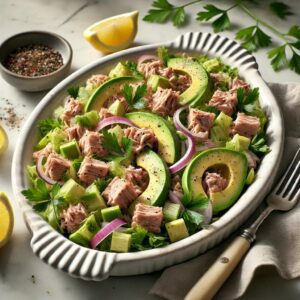

What’s Really in Your Chick-fil-A? A Deep Dive into Ingredients


Arya Soleil
Chick-fil-A has built a reputation for serving high-quality, tasty chicken sandwiches that many people love. Whether you’re a fan of their classic Chicken Sandwich or prefer the Chargrilled Chicken Club, there’s no denying the brand’s popularity. However, have you ever stopped to look at what’s actually in these sandwiches? While Chick-fil-A markets its products as “quality chicken,” a closer look at the ingredient list reveals preservatives, artificial additives, and hidden chemicals that might make you think twice before your next bite.
This article will break down the ingredients found in Chick-fil-A’s Chicken and Chargrilled Chicken Sandwiches, explaining what they are, why they’re used, and how they could affect your health.
What’s in a Chick-fil-A Chicken Sandwich?
Let’s start with the classic Chick-fil-A Chicken Sandwich. This sandwich consists of a breaded and fried chicken breast filet, pickles, and a buttered bun. Sounds simple, right? Not quite.
Key Ingredients and Their Concerns:
✔ 100% Natural Whole Breast Filet – While the chicken itself is whole breast meat, what’s added to it raises some concerns.
✔ Seasoning (Salt, Monosodium Glutamate (MSG), Sugar, Spices, Paprika)
- Monosodium Glutamate (MSG) – MSG is a flavor enhancer that makes food taste more savory. It’s been linked to headaches, allergic reactions, and overstimulation of brain cells. Some studies suggest it may contribute to obesity and metabolic disorders.
- Sugar – Added sugar in chicken? Yes! Even small amounts of added sugar can contribute to insulin resistance and inflammation.
✔ Seasoned Coater (Enriched Bleached Flour, Malted Barley Flour, Sugar, Salt, MSG, Nonfat Milk, Baking Soda, Monocalcium Phosphate, Spices, Soybean Oil, Paprika Color)
- Enriched Bleached Flour – This is refined flour stripped of natural nutrients, then “enriched” with synthetic vitamins. Bleaching flour may produce harmful byproducts, and it lacks the fiber and nutrients of whole grains.
- Soybean Oil – Heavily processed, often genetically modified, and high in inflammatory omega-6 fatty acids.
✔ Milk Wash (Whole Powdered Egg, Nonfat Milk Solids) – Used to coat the chicken, but adds unnecessary processed dairy and eggs.
✔ Peanut Oil (Fully Refined, with TBHQ and Citric Acid as Preservatives)
- TBHQ (Tertiary Butylhydroquinone) – A chemical preservative linked to liver damage, neurological effects, and potential carcinogenic risks in animal studies.
- Citric Acid – While naturally found in citrus fruits, the version used in processed foods is usually synthetically derived from mold, which may trigger inflammation or digestive issues.
✔ Dimethylpolysiloxane (Anti-Foaming Agent in Oil) – This industrial chemical is found in Silicone and Silly Putty and is added to cooking oils to prevent foam during frying. The safety concerns surrounding it remain controversial, with some studies questioning its long-term effects.
✔ Butter-Flavored Vegetable Oil (Partially Hydrogenated Soybean Oil, Palm Kernel Oil, Lecithin, Artificial Flavor, TBHQ, Citric Acid, Artificial Color)
- Partially Hydrogenated Oils – These are a source of trans fats, which have been banned in many countries due to their link to heart disease, inflammation, and obesity.
- Artificial Flavors & Colors – These synthetic additives can contribute to allergic reactions, hyperactivity in children, and long-term health risks.
✔ Pickles (Cucumbers, Water, Vinegar, Salt, Calcium Chloride, Alum, Sodium Benzoate, Potassium Sorbate, Polysorbate 80, Yellow #5, Blue #1)
- Sodium Benzoate & Potassium Sorbate (Preservatives) – These chemical preservatives help extend shelf life but may contribute to cellular damage and toxicity in large amounts.
- Artificial Colors (Yellow #5, Blue #1) – Linked to hyperactivity in children and allergic reactions in sensitive individuals.
Conclusion on the Chick-fil-A Chicken Sandwich:
What seems like a simple sandwich contains a long list of processed ingredients, preservatives, and artificial additives. While Chick-fil-A’s chicken might be higher quality than other fast-food brands, the added chemicals may negatively affect health over time.
What’s in the Chick-fil-A Chargrilled Chicken Sandwich?
For those looking for a “healthier” option, the Chick-fil-A Chargrilled Chicken Sandwich seems like a better choice. However, let’s take a closer look at its ingredients.
Key Ingredients and Their Concerns:
✔ Chargrilled Chicken Breast Filets (Containing up to 18% Solution of Water, Seasoning, Sugar, Salt, Dextrose, Garlic Powder, Onion Powder, Maltodextrin, Autolyzed Yeast Extract, Spices, Disodium Inosinate, Disodium Guanylate, Flavor, Paprika Color)
- 18% Water Solution – This means the chicken isn’t entirely chicken; it’s injected with a solution to improve texture and increase weight.
- Autolyzed Yeast Extract & Disodium Guanylate/Inosinate – These are MSG-like flavor enhancers that may cause headaches, hyperactivity, and food cravings.
- Maltodextrin – A highly processed starch that spikes blood sugar and may promote gut imbalances.
✔ Butter-Flavored Vegetable Oil (Partially Hydrogenated Soybean Oil, Palm Kernel Oil, Artificial Flavor, TBHQ, Beta Carotene)
Again, this contains trans fats, artificial flavors, and preservatives.
✔ Rice Starch and Potassium Phosphate – Used as thickeners and texture enhancers, these additives are common in processed foods.
✔ Golden Wheat Bun – While it sounds healthy, it’s likely made with refined flour and preservatives, similar to the standard bun.
Conclusion on the Chargrilled Chicken Sandwich:
Although it may seem like a better option than the fried sandwich, it still contains hidden sugars, chemical preservatives, and processed ingredients that may be harmful with long-term consumption.
What About the Chargrilled Chicken Club?
The Chick-fil-A Chargrilled Chicken Club Sandwich is similar to the Chargrilled Chicken Sandwich but with added provolone cheese and bacon. Let’s highlight the concerns:
✔ Provolone Cheese (Pasteurized Milk, Enzymes, Cultures, Salt, Smoke Flavor)
Most commercial cheeses contain additives, preservatives, and processed ingredients, making them less nutritious than fresh dairy options.
✔ Bacon (Cured with Water, Salt, Sugar, Hickory Smoke Flavoring, Sodium Erythorbate, Sodium Nitrite)
- Sodium Nitrite – A preservative used in processed meats, linked to increased cancer risk.
While this sandwich has more protein and healthy fats, the processed bacon and cheese still introduce unnecessary additives and preservatives.
Should You Eat Chick-fil-A? Healthier Alternatives and Tips
Chick-fil-A might be one of the “better” fast-food choices, but it still contains many hidden additives, preservatives, and unhealthy oils. If you choose to eat Chick-fil-A, here are some healthier alternatives:
✔ Opt for the Grilled Chicken Nuggets – These contain fewer additives than the sandwiches.
✔ Skip the bun – Buns contain processed flour, sugar, and preservatives. Ask for a lettuce wrap instead.
✔ Avoid fried options – Fried foods contain harmful oils and additives.
✔ Limit sauces – Many Chick-fil-A sauces contain added sugars, preservatives, and artificial ingredients.
✔ Make a homemade version – You can recreate a healthier version at home using organic chicken, whole-grain buns, and homemade pickles.
Final Thoughts: Is Chick-fil-A Really “Better” Fast Food?
While Chick-fil-A is often perceived as a “healthier” fast-food option, a closer look at the ingredients reveals a different story. The use of MSG, artificial flavors, preservatives, and unhealthy oils makes it far from a clean, whole-food option.
If you’re serious about your health, it’s best to limit processed fast food and focus on fresh, home-cooked meals. While occasional indulgence won’t hurt, understanding what’s in your food empowers you to make better choices for your long-term health.
Recommended Reads

- March 22, 2025
Anti-Inflammatory Breakfasts: Easy Recipes to Start Your Day Right
Home News Healthy Habits & Lifestyle Health Conditions &...


- March 22, 2025
Questioning the FDA: A Deeper Look at the Food and Drug Administration’s Role
Home News Healthy Habits & Lifestyle Health Conditions &...


- March 22, 2025
Make ‘Raw Milk’ Just ‘Milk’ Again: A Closer Look at the Raw Milk Debate
Home News Healthy Habits & Lifestyle Health Conditions &...


- March 22, 2025
The Power of Sweet Potatoes: A Superfood for Eyes, Skin, and Beyond
Home News Healthy Habits & Lifestyle Health Conditions &...


- March 22, 2025
Sugar-Free: A Code Word for “We’ve Replaced It with Something Worse for You”
Home News Healthy Habits & Lifestyle Health Conditions &...


- March 22, 2025
The Evolution of Food: How Modern Diets Are Fueling Chronic Disease
Home News Healthy Habits & Lifestyle Health Conditions &...

What’s Really in Your Chick-fil-A? A Deep Dive into Ingredients

Chick-fil-A has built a reputation for serving high-quality, tasty chicken sandwiches that many people love. Whether you’re a fan of their classic Chicken Sandwich or prefer the Chargrilled Chicken Club, there’s no denying the brand’s popularity. However, have you ever stopped to look at what’s actually in these sandwiches? While Chick-fil-A markets its products as “quality chicken,” a closer look at the ingredient list reveals preservatives, artificial additives, and hidden chemicals that might make you think twice before your next bite.
This article will break down the ingredients found in Chick-fil-A’s Chicken and Chargrilled Chicken Sandwiches, explaining what they are, why they’re used, and how they could affect your health.
What’s in a Chick-fil-A Chicken Sandwich?
Let’s start with the classic Chick-fil-A Chicken Sandwich. This sandwich consists of a breaded and fried chicken breast filet, pickles, and a buttered bun. Sounds simple, right? Not quite.
Key Ingredients and Their Concerns:
✔ 100% Natural Whole Breast Filet – While the chicken itself is whole breast meat, what’s added to it raises some concerns.
✔ Seasoning (Salt, Monosodium Glutamate (MSG), Sugar, Spices, Paprika)
- Monosodium Glutamate (MSG) – MSG is a flavor enhancer that makes food taste more savory. It’s been linked to headaches, allergic reactions, and overstimulation of brain cells. Some studies suggest it may contribute to obesity and metabolic disorders.
- Sugar – Added sugar in chicken? Yes! Even small amounts of added sugar can contribute to insulin resistance and inflammation.
✔ Seasoned Coater (Enriched Bleached Flour, Malted Barley Flour, Sugar, Salt, MSG, Nonfat Milk, Baking Soda, Monocalcium Phosphate, Spices, Soybean Oil, Paprika Color)
- Enriched Bleached Flour – This is refined flour stripped of natural nutrients, then “enriched” with synthetic vitamins. Bleaching flour may produce harmful byproducts, and it lacks the fiber and nutrients of whole grains.
- Soybean Oil – Heavily processed, often genetically modified, and high in inflammatory omega-6 fatty acids.
✔ Milk Wash (Whole Powdered Egg, Nonfat Milk Solids) – Used to coat the chicken, but adds unnecessary processed dairy and eggs.
✔ Peanut Oil (Fully Refined, with TBHQ and Citric Acid as Preservatives)
- TBHQ (Tertiary Butylhydroquinone) – A chemical preservative linked to liver damage, neurological effects, and potential carcinogenic risks in animal studies.
- Citric Acid – While naturally found in citrus fruits, the version used in processed foods is usually synthetically derived from mold, which may trigger inflammation or digestive issues.
✔ Dimethylpolysiloxane (Anti-Foaming Agent in Oil) – This industrial chemical is found in Silicone and Silly Putty and is added to cooking oils to prevent foam during frying. The safety concerns surrounding it remain controversial, with some studies questioning its long-term effects.
✔ Butter-Flavored Vegetable Oil (Partially Hydrogenated Soybean Oil, Palm Kernel Oil, Lecithin, Artificial Flavor, TBHQ, Citric Acid, Artificial Color)
- Partially Hydrogenated Oils – These are a source of trans fats, which have been banned in many countries due to their link to heart disease, inflammation, and obesity.
- Artificial Flavors & Colors – These synthetic additives can contribute to allergic reactions, hyperactivity in children, and long-term health risks.
✔ Pickles (Cucumbers, Water, Vinegar, Salt, Calcium Chloride, Alum, Sodium Benzoate, Potassium Sorbate, Polysorbate 80, Yellow #5, Blue #1)
- Sodium Benzoate & Potassium Sorbate (Preservatives) – These chemical preservatives help extend shelf life but may contribute to cellular damage and toxicity in large amounts.
- Artificial Colors (Yellow #5, Blue #1) – Linked to hyperactivity in children and allergic reactions in sensitive individuals.
Conclusion on the Chick-fil-A Chicken Sandwich:
What seems like a simple sandwich contains a long list of processed ingredients, preservatives, and artificial additives. While Chick-fil-A’s chicken might be higher quality than other fast-food brands, the added chemicals may negatively affect health over time.
What’s in the Chick-fil-A Chargrilled Chicken Sandwich?
For those looking for a “healthier” option, the Chick-fil-A Chargrilled Chicken Sandwich seems like a better choice. However, let’s take a closer look at its ingredients.
Key Ingredients and Their Concerns:
✔ Chargrilled Chicken Breast Filets (Containing up to 18% Solution of Water, Seasoning, Sugar, Salt, Dextrose, Garlic Powder, Onion Powder, Maltodextrin, Autolyzed Yeast Extract, Spices, Disodium Inosinate, Disodium Guanylate, Flavor, Paprika Color)
- 18% Water Solution – This means the chicken isn’t entirely chicken; it’s injected with a solution to improve texture and increase weight.
- Autolyzed Yeast Extract & Disodium Guanylate/Inosinate – These are MSG-like flavor enhancers that may cause headaches, hyperactivity, and food cravings.
- Maltodextrin – A highly processed starch that spikes blood sugar and may promote gut imbalances.
✔ Butter-Flavored Vegetable Oil (Partially Hydrogenated Soybean Oil, Palm Kernel Oil, Artificial Flavor, TBHQ, Beta Carotene)
Again, this contains trans fats, artificial flavors, and preservatives.
✔ Rice Starch and Potassium Phosphate – Used as thickeners and texture enhancers, these additives are common in processed foods.
✔ Golden Wheat Bun – While it sounds healthy, it’s likely made with refined flour and preservatives, similar to the standard bun.
Conclusion on the Chargrilled Chicken Sandwich:
Although it may seem like a better option than the fried sandwich, it still contains hidden sugars, chemical preservatives, and processed ingredients that may be harmful with long-term consumption.
What About the Chargrilled Chicken Club?
The Chick-fil-A Chargrilled Chicken Club Sandwich is similar to the Chargrilled Chicken Sandwich but with added provolone cheese and bacon. Let’s highlight the concerns:
✔ Provolone Cheese (Pasteurized Milk, Enzymes, Cultures, Salt, Smoke Flavor)
Most commercial cheeses contain additives, preservatives, and processed ingredients, making them less nutritious than fresh dairy options.
✔ Bacon (Cured with Water, Salt, Sugar, Hickory Smoke Flavoring, Sodium Erythorbate, Sodium Nitrite)
- Sodium Nitrite – A preservative used in processed meats, linked to increased cancer risk.
While this sandwich has more protein and healthy fats, the processed bacon and cheese still introduce unnecessary additives and preservatives.
Should You Eat Chick-fil-A? Healthier Alternatives and Tips
Chick-fil-A might be one of the “better” fast-food choices, but it still contains many hidden additives, preservatives, and unhealthy oils. If you choose to eat Chick-fil-A, here are some healthier alternatives:
✔ Opt for the Grilled Chicken Nuggets – These contain fewer additives than the sandwiches.
✔ Skip the bun – Buns contain processed flour, sugar, and preservatives. Ask for a lettuce wrap instead.
✔ Avoid fried options – Fried foods contain harmful oils and additives.
✔ Limit sauces – Many Chick-fil-A sauces contain added sugars, preservatives, and artificial ingredients.
✔ Make a homemade version – You can recreate a healthier version at home using organic chicken, whole-grain buns, and homemade pickles.
Final Thoughts: Is Chick-fil-A Really “Better” Fast Food?
While Chick-fil-A is often perceived as a “healthier” fast-food option, a closer look at the ingredients reveals a different story. The use of MSG, artificial flavors, preservatives, and unhealthy oils makes it far from a clean, whole-food option.
If you’re serious about your health, it’s best to limit processed fast food and focus on fresh, home-cooked meals. While occasional indulgence won’t hurt, understanding what’s in your food empowers you to make better choices for your long-term health.
Recommended Reads

- March 22, 2025
Anti-Inflammatory Breakfasts: Easy Recipes to Start Your Day Right
Home News Healthy Habits & Lifestyle Health Conditions &...


- March 22, 2025
Questioning the FDA: A Deeper Look at the Food and Drug Administration’s Role
Home News Healthy Habits & Lifestyle Health Conditions &...


- March 22, 2025
Make ‘Raw Milk’ Just ‘Milk’ Again: A Closer Look at the Raw Milk Debate
Home News Healthy Habits & Lifestyle Health Conditions &...


- March 22, 2025
The Power of Sweet Potatoes: A Superfood for Eyes, Skin, and Beyond
Home News Healthy Habits & Lifestyle Health Conditions &...


- March 22, 2025
Sugar-Free: A Code Word for “We’ve Replaced It with Something Worse for You”
Home News Healthy Habits & Lifestyle Health Conditions &...


- March 22, 2025
The Evolution of Food: How Modern Diets Are Fueling Chronic Disease
Home News Healthy Habits & Lifestyle Health Conditions &...



